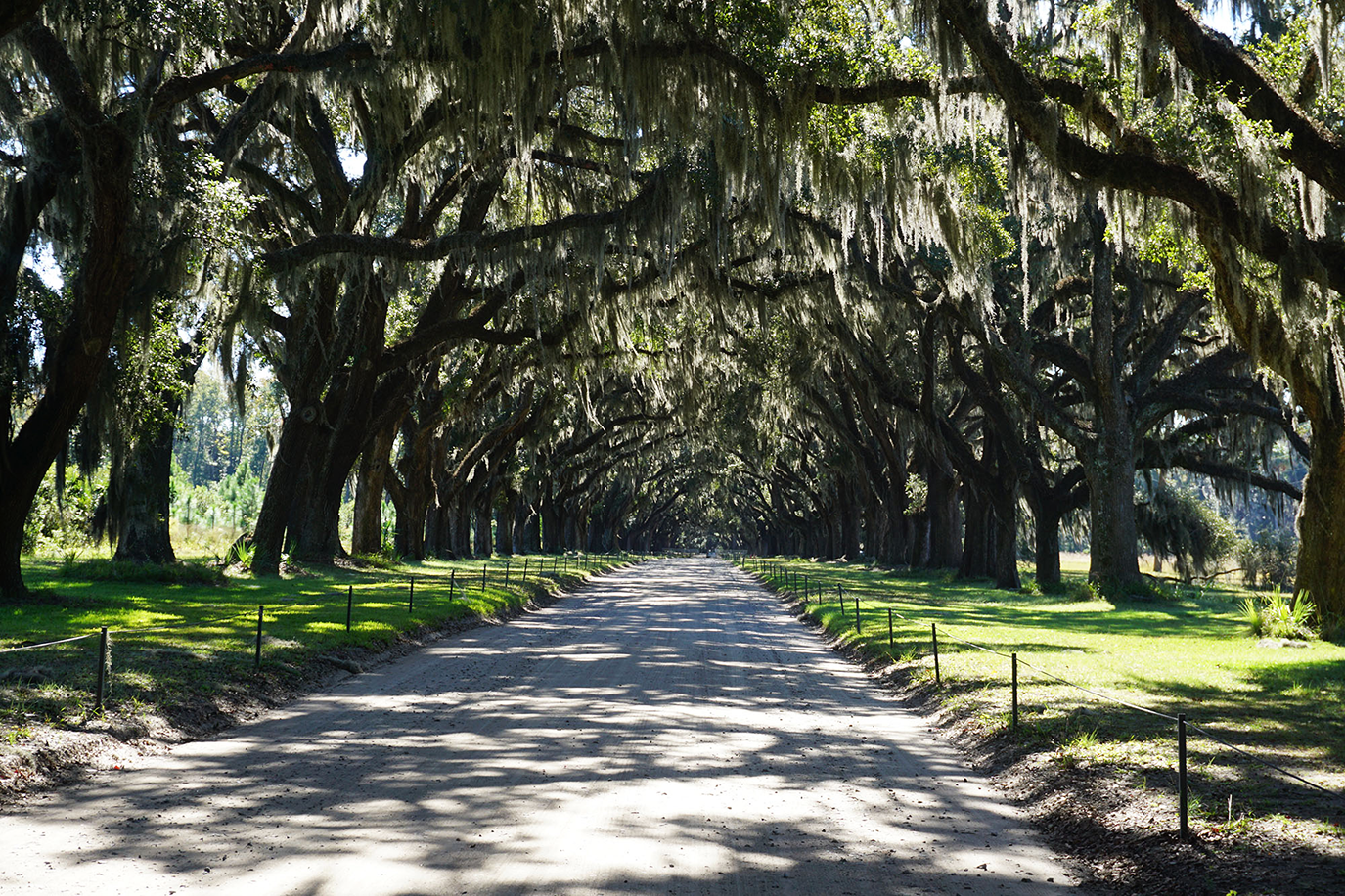Here are the best trees to see in Savannah, the Forest City. As you explore the squares and streets of Savannah’s Historic District, imagine yourself stepping back into a peaceful, quiet time. Look up into the live oak tree canopy where Spanish moss hangs from the wide-spread branches. See if you can spot the resurrection fern blanketing the limbs in bright green after a rain. Even though the live oaks dominate the landscape in Savannah with their size and beauty you can appreciate our magnificent native magnolias, palmettos, crepe myrtles and sycamores!
Savannah started organized tree-plantings as early as 1891, so many of the live oaks downtown are over 100 years old. They grow to be 60′ tall and over 80′ wide, providing shade and beauty to the neighborhoods.
If you appreciate trees, enjoy our list of Savannah’s most magnificent tree specimens. They are worth seeing! Venture out of the Historic District to see more examples of our trees in our parks and cemeteries. Happy tree hunting!
Savannah's Spectacular Trees
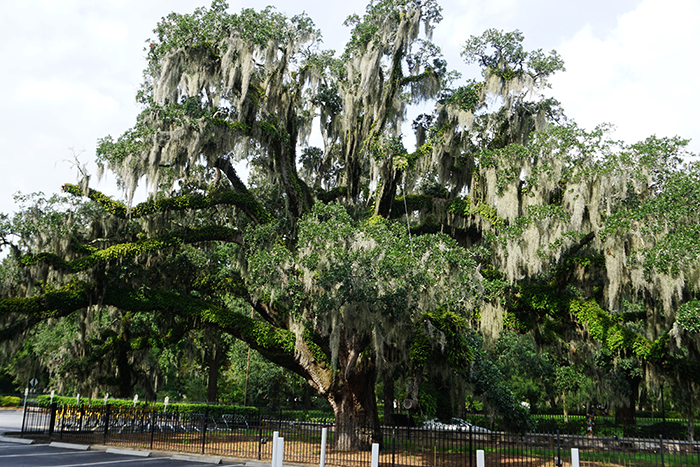
Candler Oak
Candler Oak, 516 Drayton St., across from Forsyth Park. Growing since the 1700s, this live oak is a Georgia Landmark, Historic Tree and Savannah's oldest living landmark. Local citizens founded The Savannah Tree Foundation in 1982 to protect the Candler Oak and the group organizes several events a year to celebrate and maintain the tree. Crown spread: 110 feet.
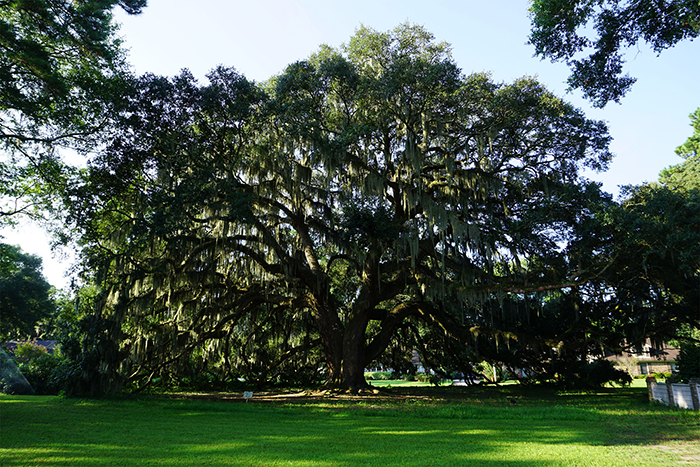
Majestic Oak
Majestic Oak, Majestic Oaks Circle. Between 300-400 years old, it may be Savannah's largest tree. Originally part of Wormsloe Plantation, but now the surrounding neighborhood maintains the tree and provides it with its own irrigation system! Park your car and pose for a photo in front of this beautiful oak.
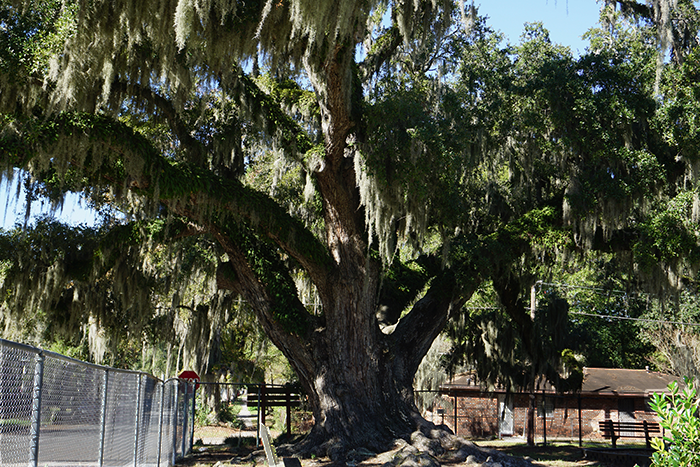
Live oak
Live oak, Benjamin Van Clark Park, 1228 E. Park Ave. Civil rights activist Van Clark is the namesake for this park and surrounding neighborhood. The playground has 2 large live oaks. This one, at a diameter of 95" is the 3rd largest documented tree in Savannah after the Majestic Oak and another oak at 2214 Pecan Dr. (101" diam.)
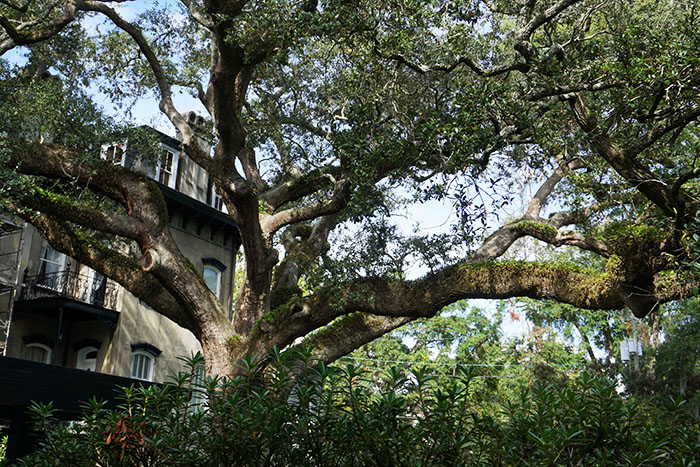
Live oak
Live oak, 210 E. Hall St. This sprawling oak is the focal point of a peaceful side garden near Forsyth Park and its branches extend across the entire lot and into the street. This tree is most likely over 100 years old.
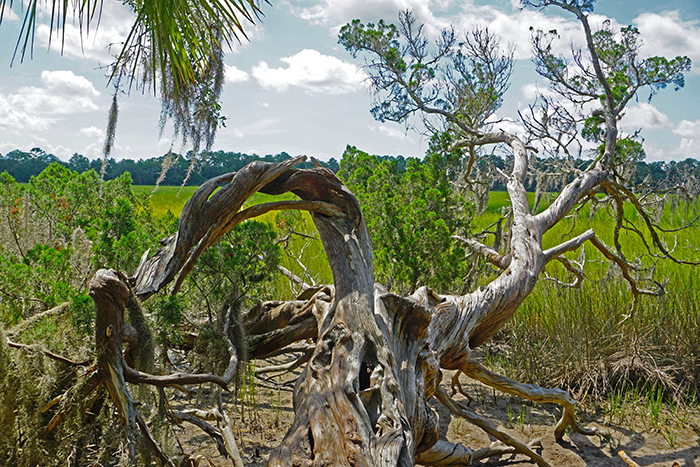
Red cedar
Red cedar on the marsh behind tabby ruins, Wormsloe State Historic Site. Cedars grow on the banks of rivers and the edge of the marsh. This one is special because it's accessible and a great place for a photo.
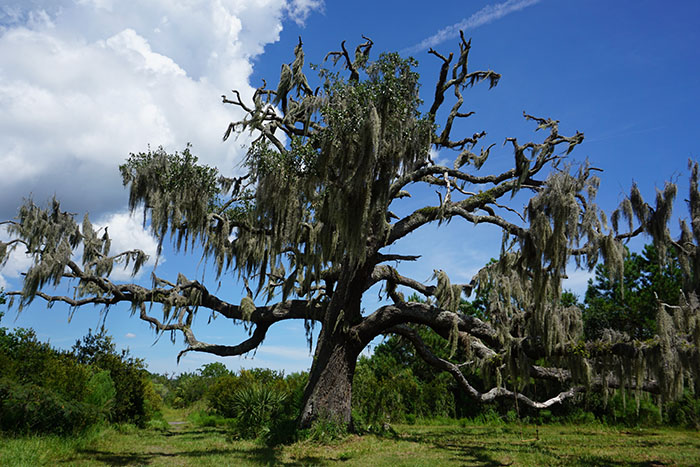
Live oak
This ghostly-looking live oak is called the "Gump Tree." It is the tree Forrest Gump played under as a child. See the swing? Find it on a loop trail on an old dairy farm in Thunderbolt which is now Victory Gardens (2500 Tennessee Ave.).
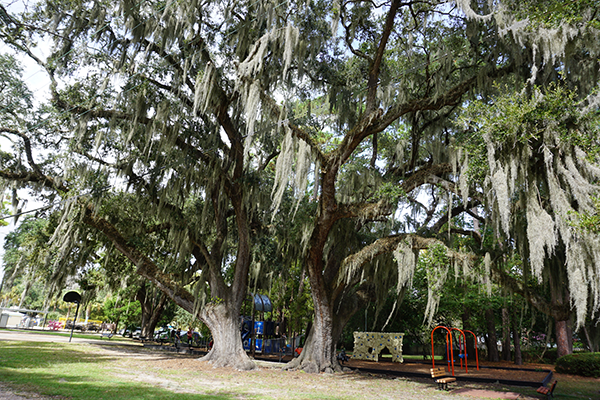
Live oaks
Live oaks, Isle of Hope playground, Rosenbrook Ave. These two old oaks provide shade for a recently updated playground in the neighborhood. Easily over 100 years old, the trees are typical of the canopy found nearby on Bluff Drive. Park here and take a walk past the Chapel and the pecan pictured below and explore the Bluff on the Skidaway River, just 100 yards away.
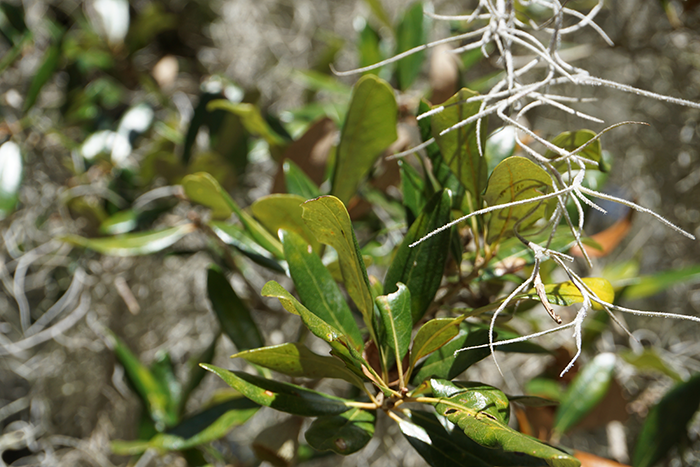
Live oak
Not pictured, but magnificent: Live oak at the eastern end of McQueen's Island Trail. Part of the Savannah Atlantic rail line that once carried passengers from Savannah to Tybee Island. Now it is a 6-mile trail for hiking and cycling. The oak is 3 miles to the left when you enter the trailhead. Currently closed for repairs from storm damage, but check their website for updates on the re-opening.
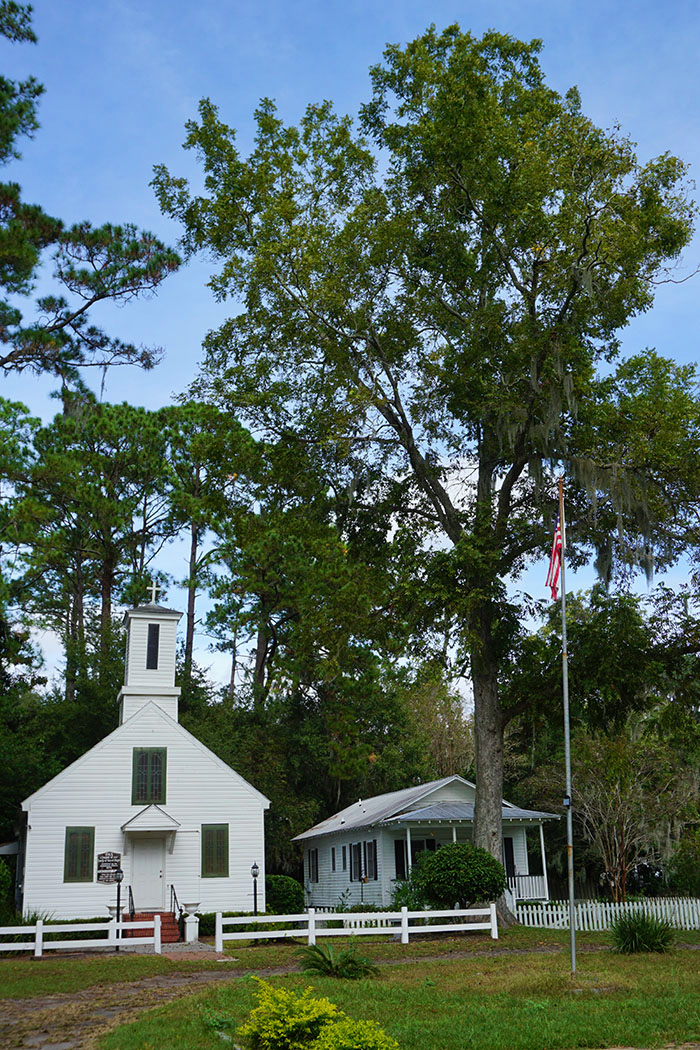
Pecan
Pecan, Rosenbrook Ave., Isle of Hope. This pecan is over 100 years old and still produces nuts. Did you know that Georgia's farmers produce over $300 million in pecans every year.? You can spot this pecan in historic Isle of Hope next to the playground and the Chapel of our Lady of Good Hope.
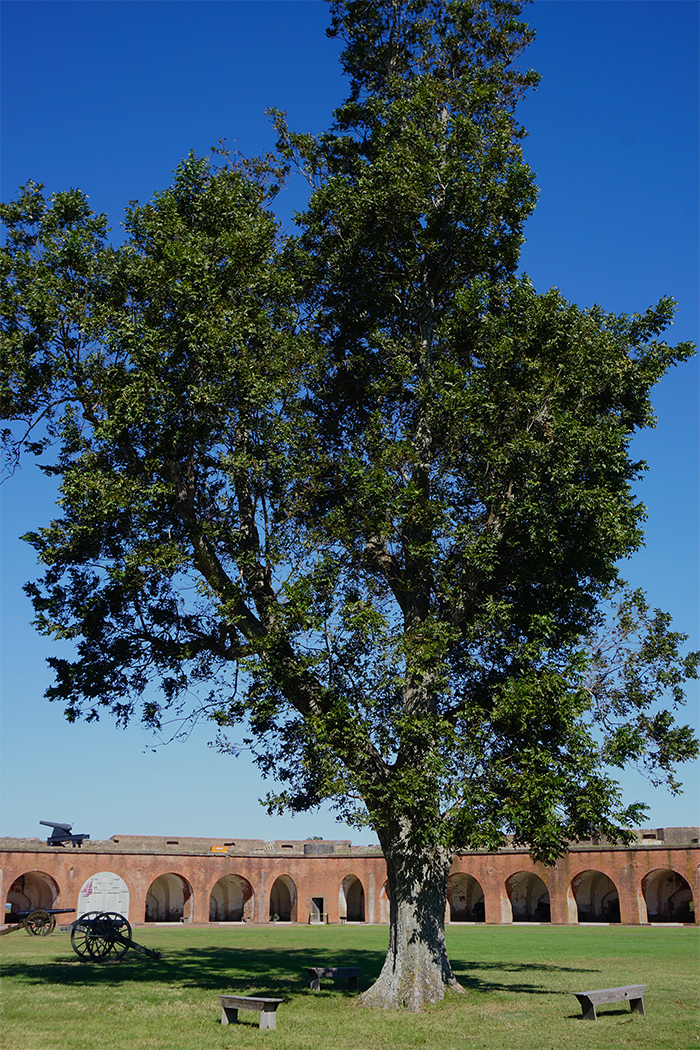
Pecan
Pecan inside Fort Pulaski National Monument on the road to Tybee Island. Unfortunately, two other pecans of similar age were lost in a recent hurricane. This tree provides welcome shade to visitors as they listen to the story of the fort.
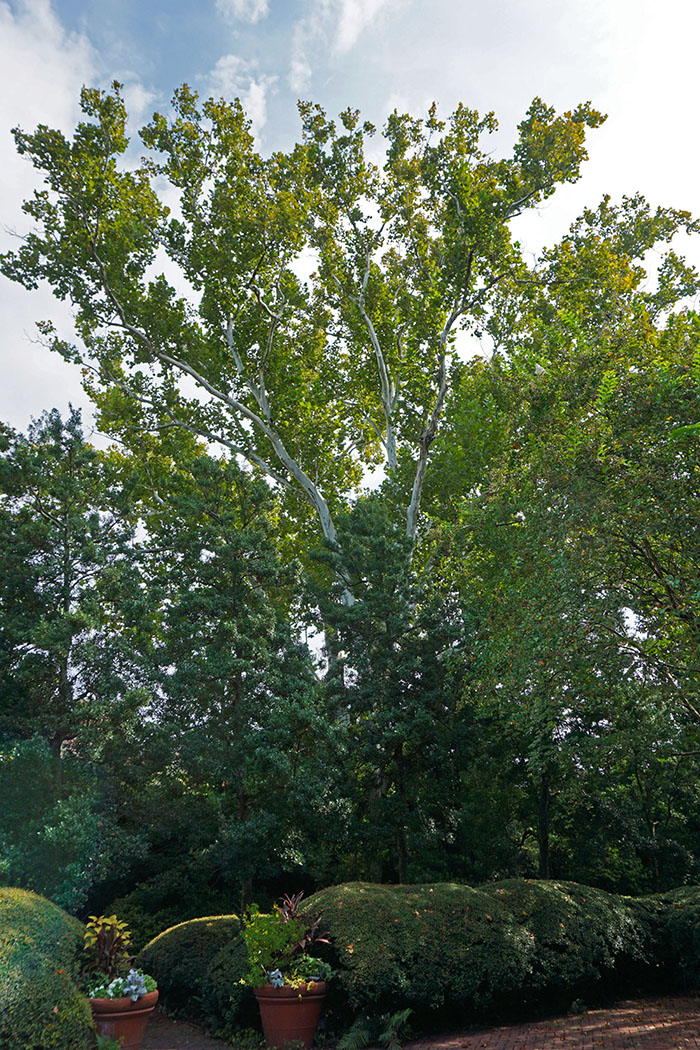
American sycamore
American sycamore, Ships of the Sea Maritime Museum Garden. This 130 year-old tree is the tallest tree in the city and you can spot it from the bridge coming into Savannah from SC. Notice the distinctive smooth white bark.
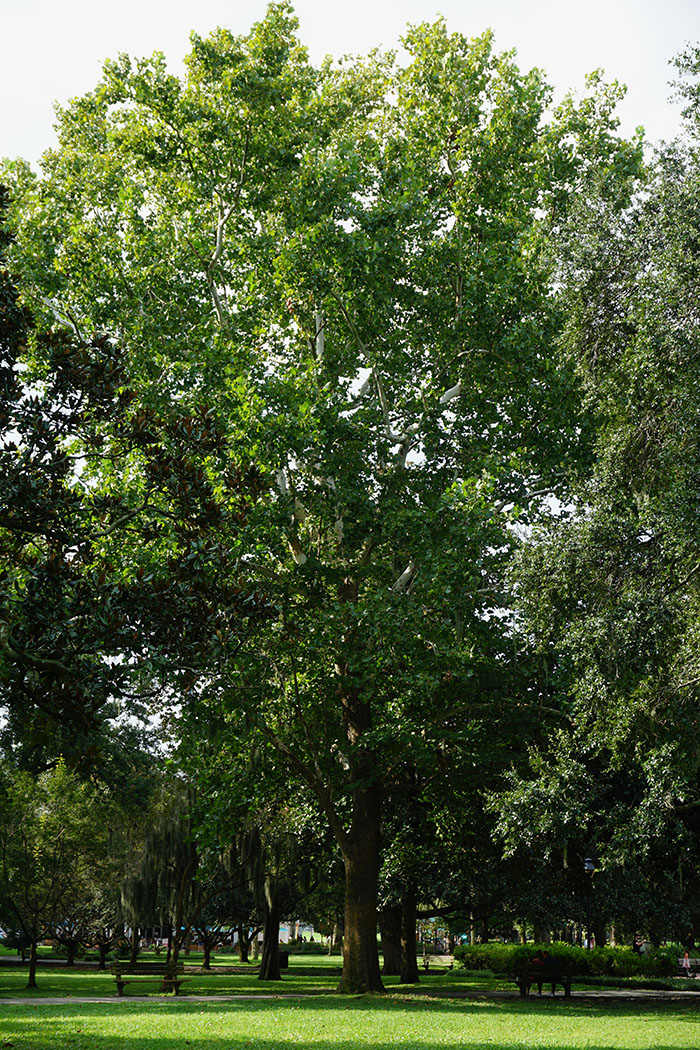
American sycamore
American sycamore, Forsyth Park, NE quadrant. Another wonderful example of a sycamore that you will see as you stroll through Savannah's historic park. You can also find tulip poplar, hickory, ginkgo, pecan, magnolia and live oak.
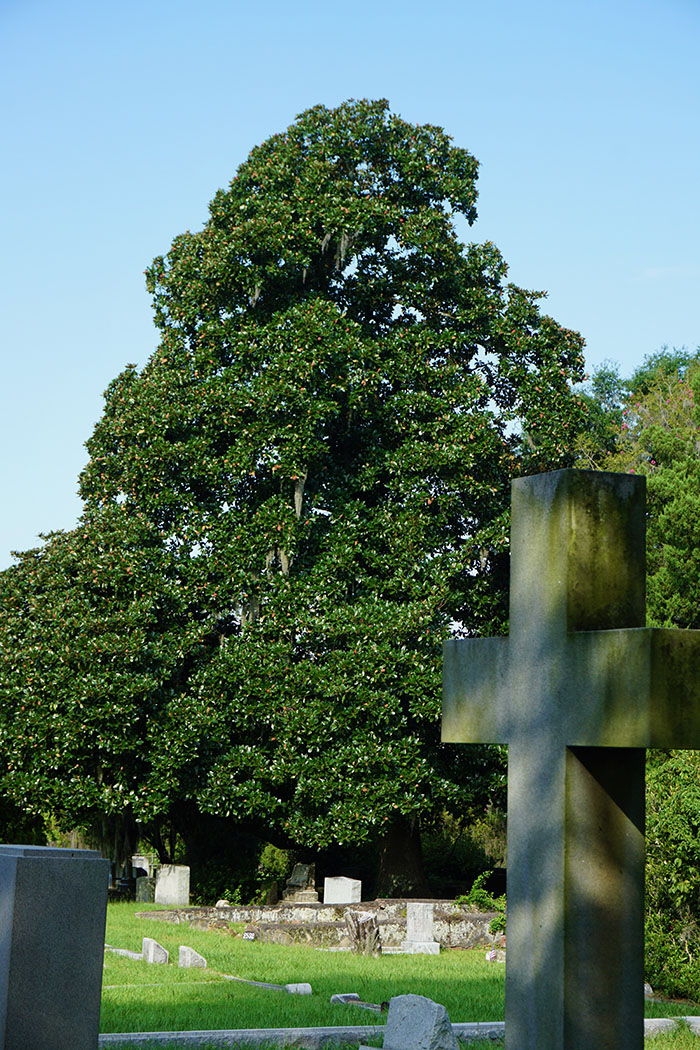
Southern magnolia
Southern magnolia, Laurel Grove Cemetery North. A native evergreen with fragrant white flowers in April/May. Magnolias are plentiful in Savannah but the prettiest ones are in the parks and cemeteries where they are left to grow undisturbed. When used as cityscape trees their lower limbs are usually removed.
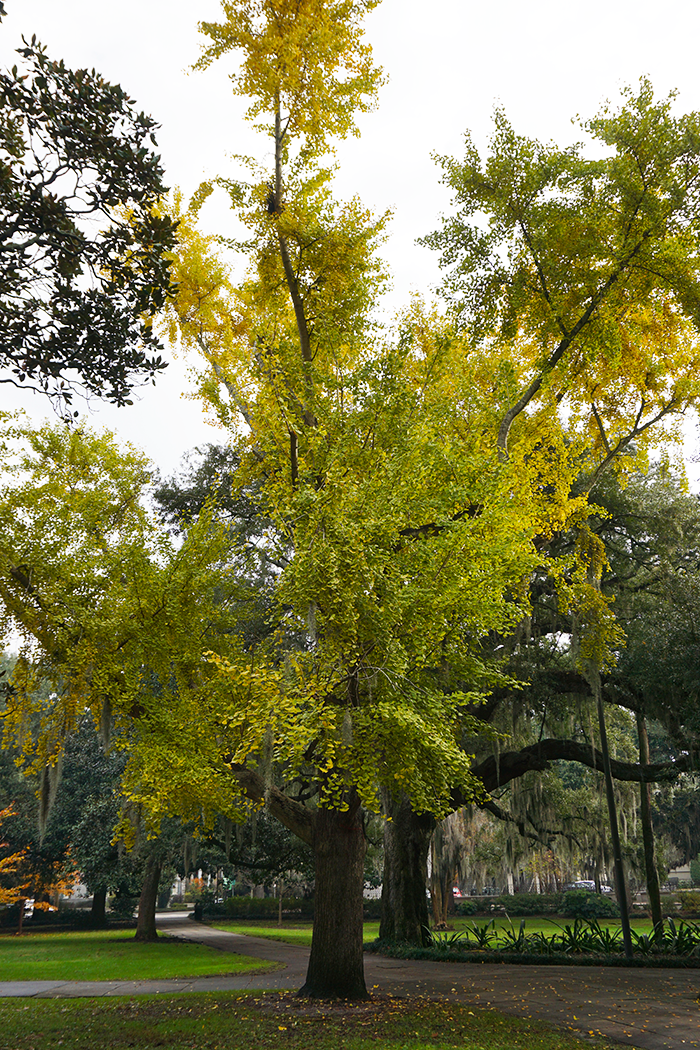
Ginkgo
Ginkgo, Forsyth Park, NE Quadrant. Native to China but widely used as a cityscape tree. Fan-shaped leaves are a beautiful yellow color in the fall. Male trees are preferred since the females produce a seed that smells awful when stepped on! You can find many more ginkgos in the parks and cemeteries.

